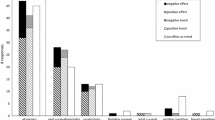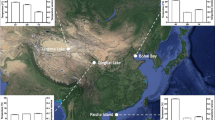Abstract
Food and predators have traditionally been viewed as mutually exclusive alternatives when considering factors affecting animal populations. This has led to long controversies such as whether annual reproductive success in songbirds is primarily a function of food-restricted production or predator-induced loss. Recent studies on both birds and mammals suggest many of these controversies may be resolved by considering the combined effects of food and predators. We conducted a 2×2 manipulative food addition plus natural predator reduction experiment on song sparrows (Melospiza melodia) over three consecutive breeding seasons. Food and predators together affected partial clutch or brood loss, nest survival (total clutch or brood loss) and annual reproductive success. When combined, our two treatments reduced partial losses by more than expected if the effects of food and predators were independent and additive. Food and predators also interacted in their effects on nest survival since food addition significantly reduced the rate of nest predation. While annual reproductive success was highly correlated with nest predation (r 2=0.71) the strength of this relationship was reinforced by the indirect effects of food addition on nest predation. A stepwise multiple regression showed that the residual variation in annual reproductive success was explained by food effects on the total number of eggs laid over the season and the combined effects of food and predators on partial losses noted above. We conclude that annual reproductive success in song sparrows is a function of both food-restricted production and predator-induced loss and indirect food and predator effects on both clutch and brood loss. We highlight the parallels between our results and those from a comparable bi-factorial experiment on mammals because we suspect combined food and predator effects are likely the norm in both birds and mammals.


Similar content being viewed by others
References
Bart J, Robson DS (1982) Estimating survivorship when the subjects are visited periodically. Ecology 63:1078–1090
Boonstra R, Hik D, Singleton GR, Tinnikov A (1998) The impact of predator-induced stress on the snowshoe hare cycle. Ecol Monogr 68:371–394
Boutin S (1990) Food supplementation experiments with terrestrial vertebrates: pattern, problems, and the future. Can J Zool 68:203–220
Clinchy M, Zanette L, Boonstra R, Wingfield JC, Smith JNM (2004) Balancing food and predator pressure induces chronic stress in songbirds. Proc R Soc Lond B 271:2473–2479
Grzybowski JA, Pease CM (2005) Renesting determines seasonal fecundity in songbirds: what do we know? What should we assume? Auk 122:280–291
Hochachka WM, Martin K, Doyle F, Krebs CJ (2000) Monitoring vertebrate populations using observational data. Can J Zool 78:521–529
Hodges KE, Krebs CJ, Hik DS, Stefan CI, Gillis EA, Doyle CE (2001) Snowshoe hare demography. In: Krebs CJ, Boutin S, Boonstra R (eds) Ecosystem dynamics of the boreal forest. Oxford University Press, Oxford, pp 141–178
Högstedt G (1981) Effect of additional food on reproductive success in the magpie (Pica pica). J Anim Ecol 50:219–229
Karels TJ, Byrom AE, Boonstra R, Krebs CJ (2000) The interactive effects of food and predators on reproduction and overwinter survival of arctic ground squirrels. J Anim Ecol 69:235–247
Krebs CJ (1999) Ecological methodology, 2nd edn. Benjamin/Cummings, Menlo Park, Calif.
Krebs CJ, Boutin S, Boonstra R, Sinclair ARE, Smith JNM, Dale MRT, Martin K, Turkington R (1995) Impact of food and predation on the snowshoe hare cycle. Science 269:1112–1115
Lack D (1947) The significance of clutch size. Ibis 89:302–352
Lack D (1954) The natural regulation of animal numbers. Oxford University Press, Oxford
Lima SL (1998) Nonlethal effects in the ecology of predator–prey interactions. Bioscience 48:25–34
Martin TE (1987) Food as a limit on breeding birds: a life-history perspective. Annu Rev Ecol Syst 18:453–487
Martin TE (1995) Avian life history evolution in relation to nest sites, nest predation and food. Ecol Monogr 65:101–127
Nagy LR, Holmes RT (2004) Factors influencing fecundity in migratory songbirds: is nest predation the most important? J Avian Biol 35:487–491
Newton I (1993) Predation and limitation of bird numbers. Curr Ornithol 11:143–198
Newton I (1998) Population limitation in birds. Academic, London
Palkovacs EP (2003) Explaining adaptive shifts in body size on islands: a life history approach. Oikos 103:37–44
Rogers CM, Taitt MJ, Smith JNM, Jongeian G (1997) Nest predation and cowbird parasitism create a demographic sink in wetland-breeding song sparrows. Condor 99:622–633
Sauer JR, Williams BK (1989) Generalized procedures for testing hypotheses about survival or recovery rates. J Wildl Manage 53:137–142
Schmidt KA, Ostfeld RS (2003) Songbird populations in fluctuating environments: predator responses to pulsed resources. Ecology 84:406–416
Skutch AF (1949) Do tropical birds raise as many young as they can nourish? Ibis 91:430–455
Smith JNM, Taitt MJ, Rogers CM, Arcese P, Keller LF, Cassidy ALEV, Hochachka WM (1996) A metapopulation approach to the population biology of the song sparrow Melospiza melodia. Ibis 138:120–128
Yom-Tov Y (1974) The effect of food and predation on breeding density and success, clutch size and laying date of the crow (Corvus corone L.). J Anim Ecol 43:479–498
Zanette L, Clinchy M, Smith JNM (2006) Food and predators affect egg production in song sparrows. Ecology (in press)
Zanette L, Smith JNM, van Oort H, Clinchy M (2003) Synergistic effects of food and predators on annual reproductive success in song sparrows. Proc R Soc Lond B 270:799–803
Acknowledgements
We thank Harry van Oort, Anne Duncan-Rastogi, Jeannie Trudeau, Josh Malt, Chris de Ruyck, Andrew Davis, Lionel Leston and Nathalie Denis for assistance in the field; BC Parks, the Saanich Municipality and private landowners for access to the sites; Sharon Hartwell and the Rithet’s Bog Conservation Society and Beryl Clinchy for support; and the Chow Barn for accepting our feed deliveries. Tim Karels, Anne Duncan-Rastogi, Bethany Kempster and an anonymous reviewer provided many helpful comments on the manuscript. This research was funded by the Natural Sciences and Engineering Research Council of Canada. All experiments complied with the laws of Canada.
Author information
Authors and Affiliations
Corresponding author
Additional information
Communicated by Scott Robinson
Rights and permissions
About this article
Cite this article
Zanette, L., Clinchy, M. & Smith, J.N.M. Combined food and predator effects on songbird nest survival and annual reproductive success: results from a bi-factorial experiment. Oecologia 147, 632–640 (2006). https://doi.org/10.1007/s00442-005-0330-y
Received:
Accepted:
Published:
Issue Date:
DOI: https://doi.org/10.1007/s00442-005-0330-y




